Abstract
Much has been learnt of the epidemiology of yaws during eradication campaigns in populations in which the prevalence of active yaws was high, but not all has been published. The recognition of the importance of latent cases in the maintenance of yaws has contributed to the effectiveness of these campaigns. Yaws eradication activities are extending into populations where at present active yaws is often not high. Planning of effective and economical eradication measures, especially in such populations, needs as complete a picture of the disease as possible, from its transmission and the factors that favour this until the death of the infected person, before or after cure of the infection either after chemotherapy or spontaneously.
By revealing the many gaps that still remain in our knowledge of yaws, this summary may encourage those who have gathered valuable material during field work to study and prepare it for publication.
Full text
PDF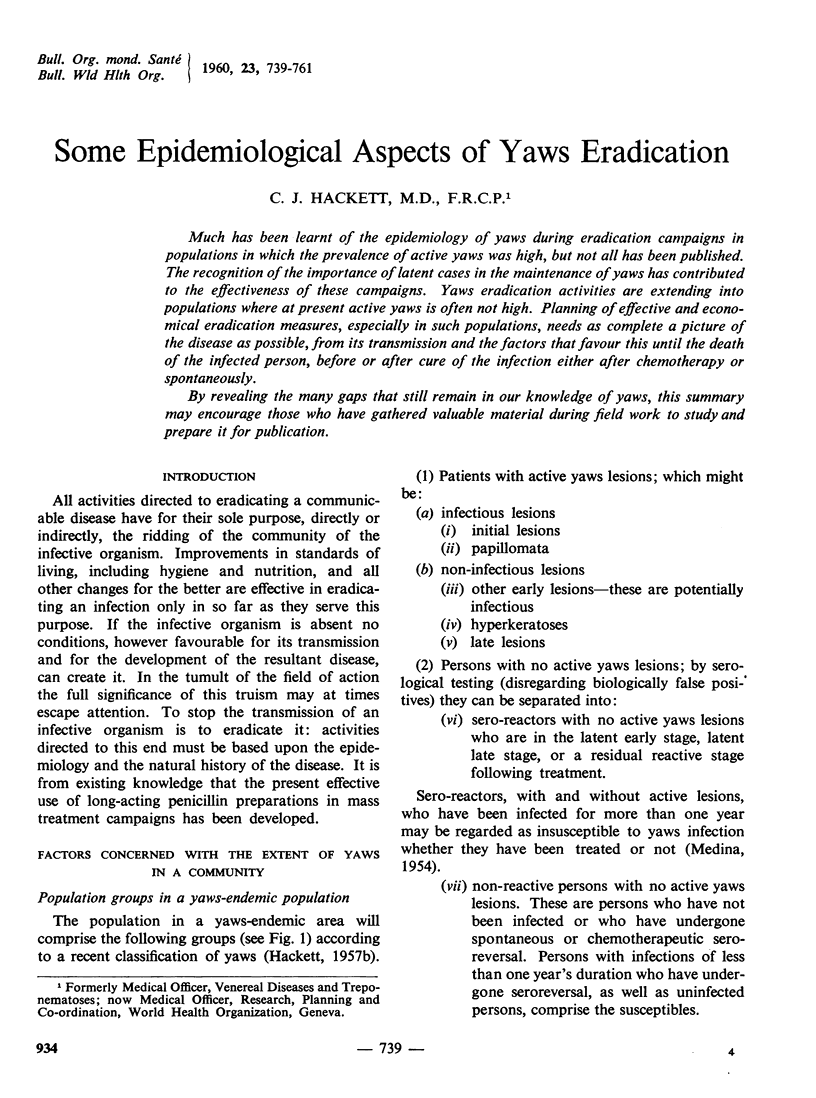
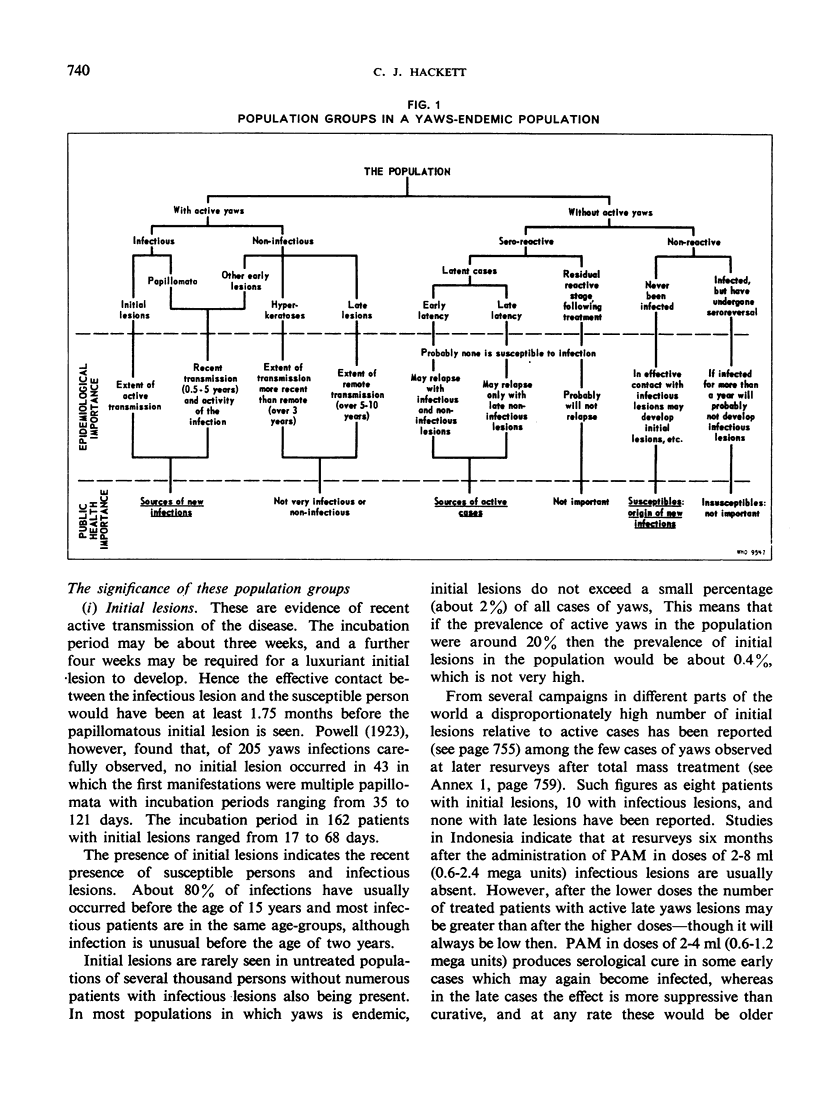
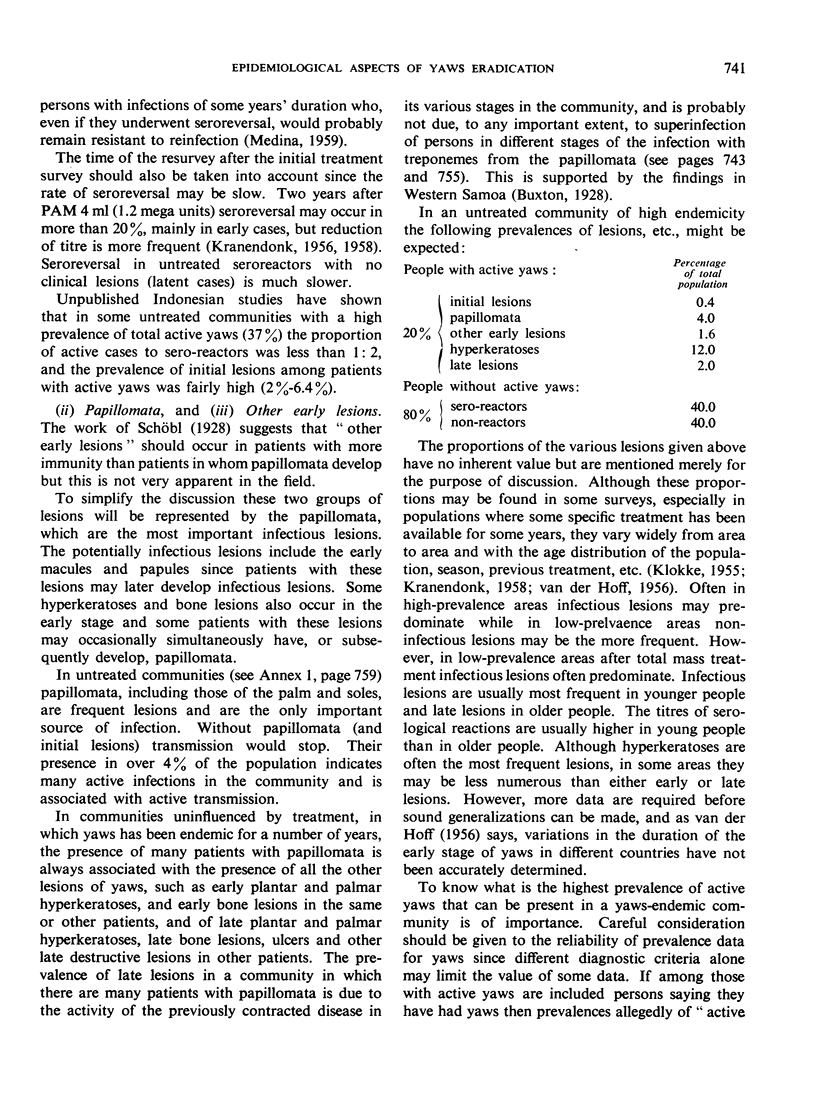
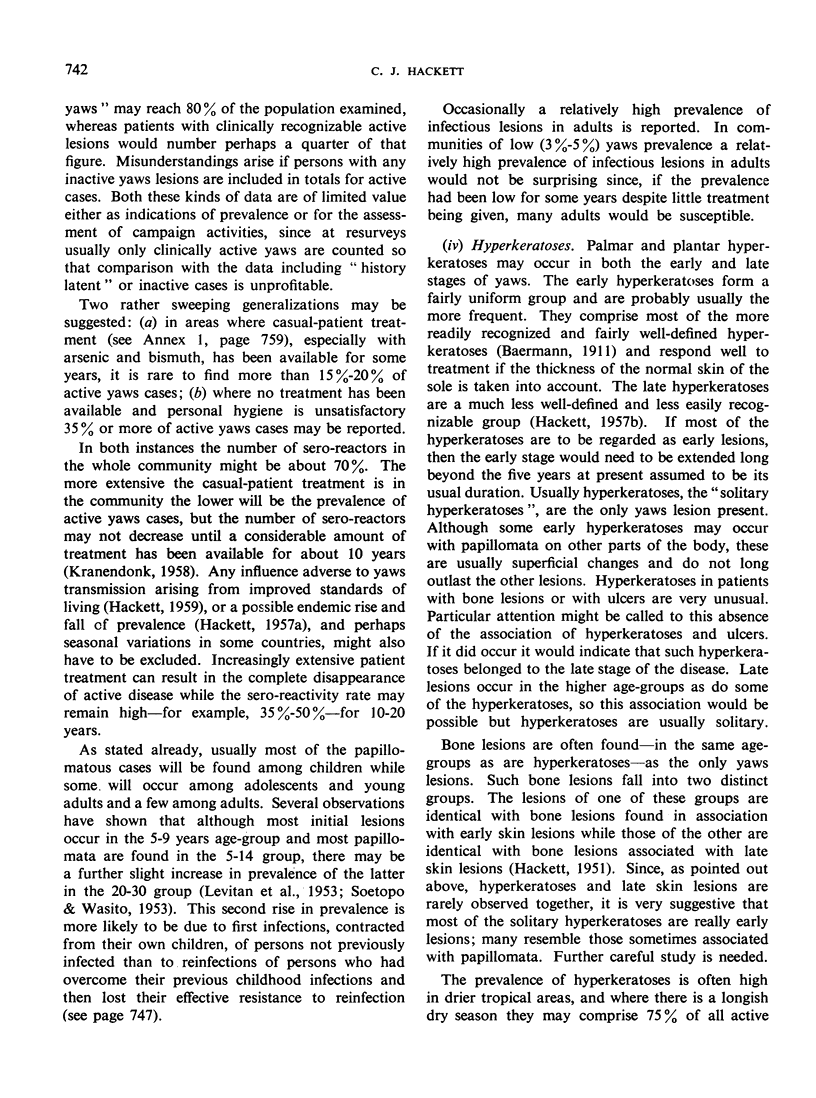
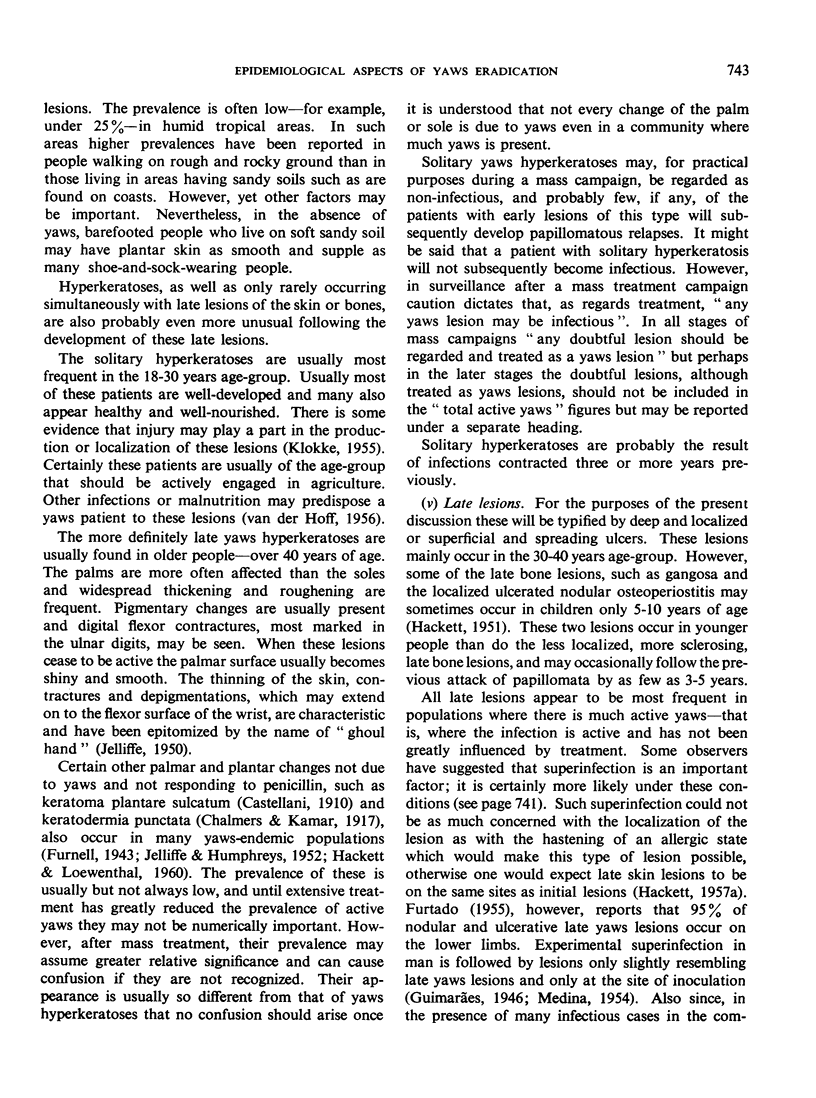
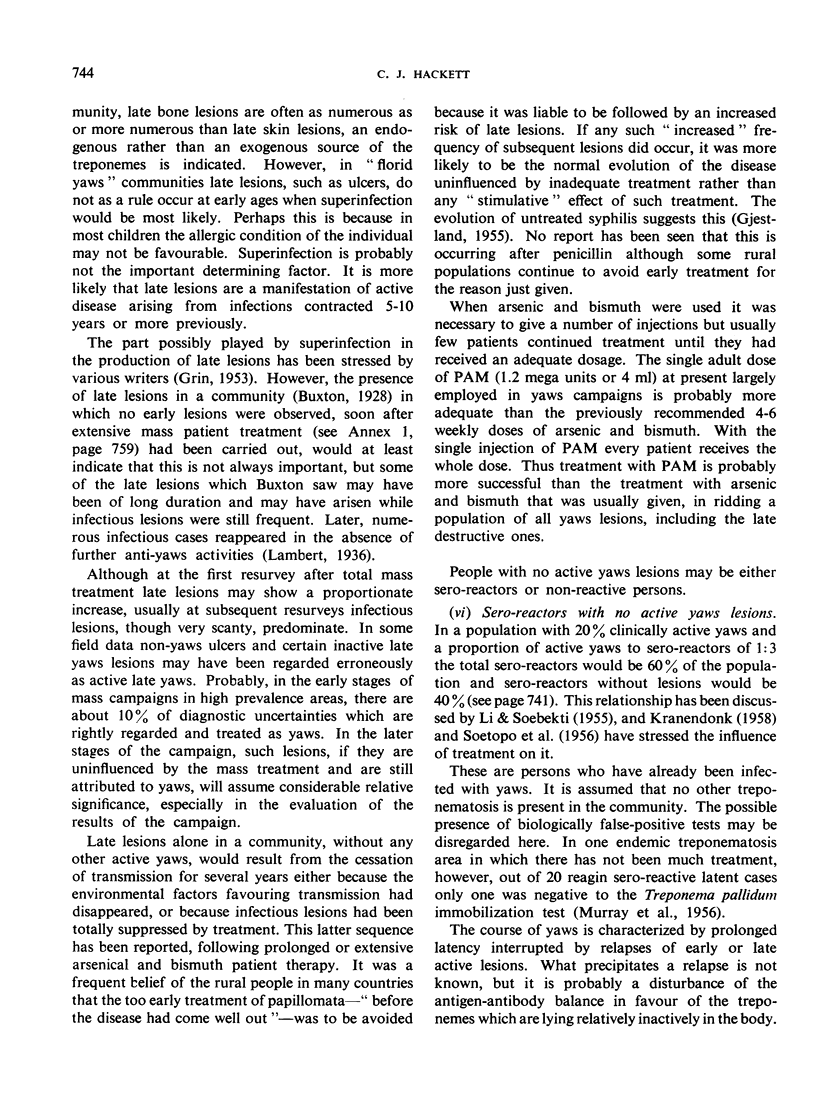
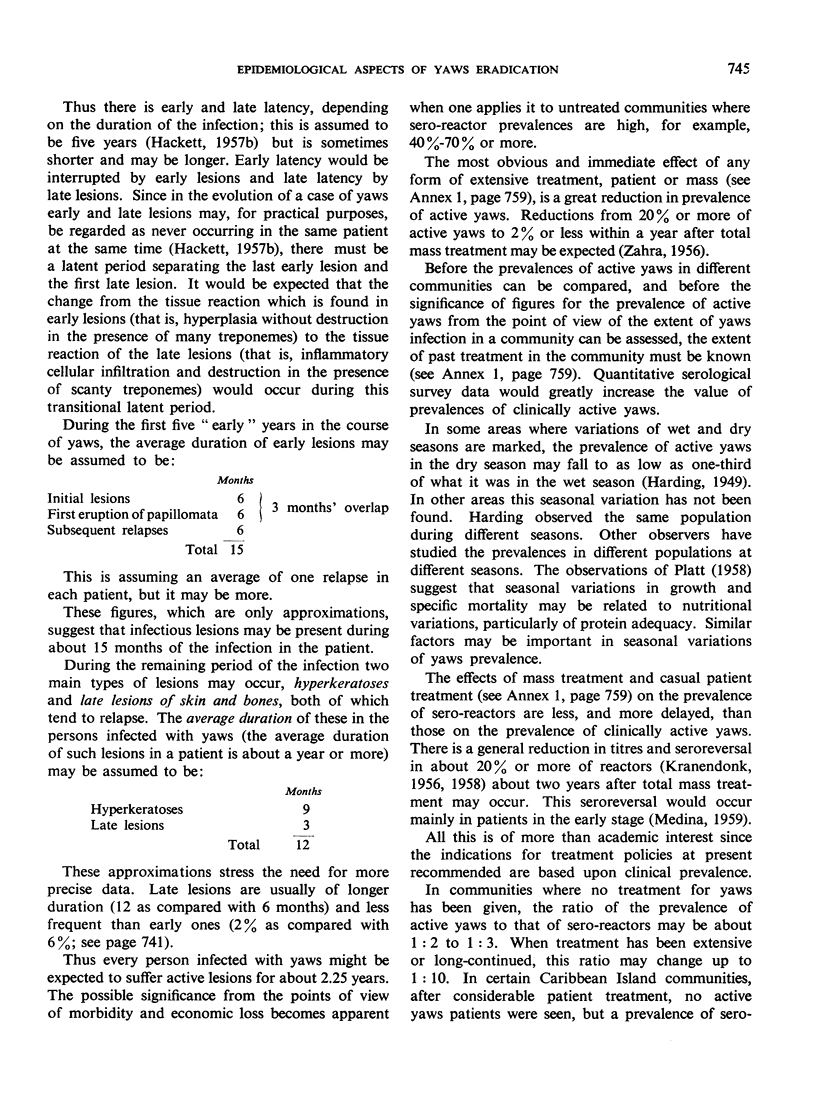
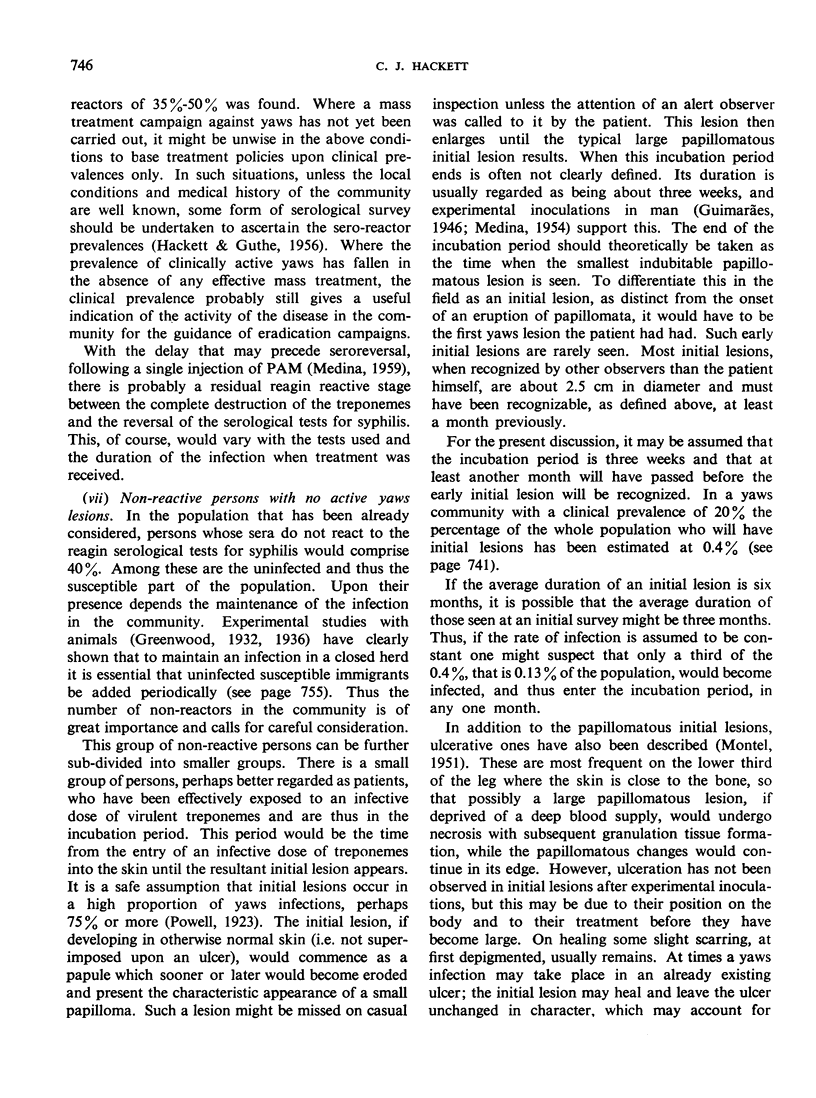
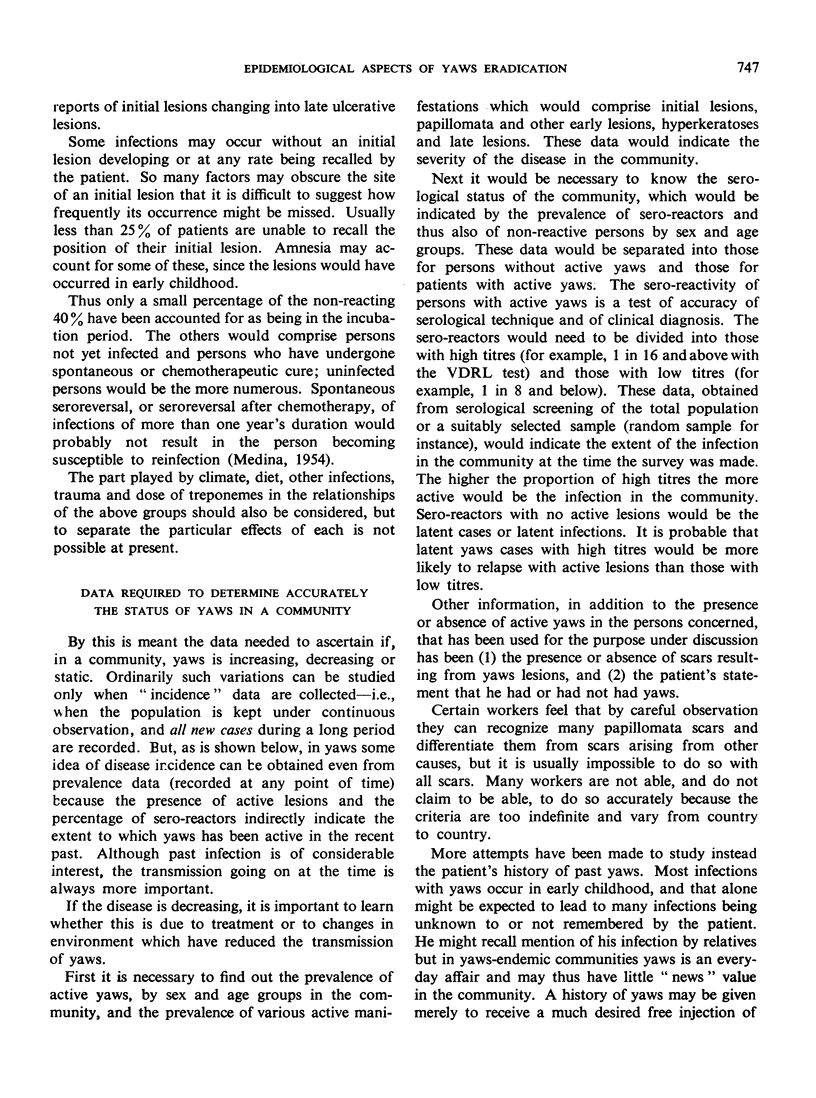
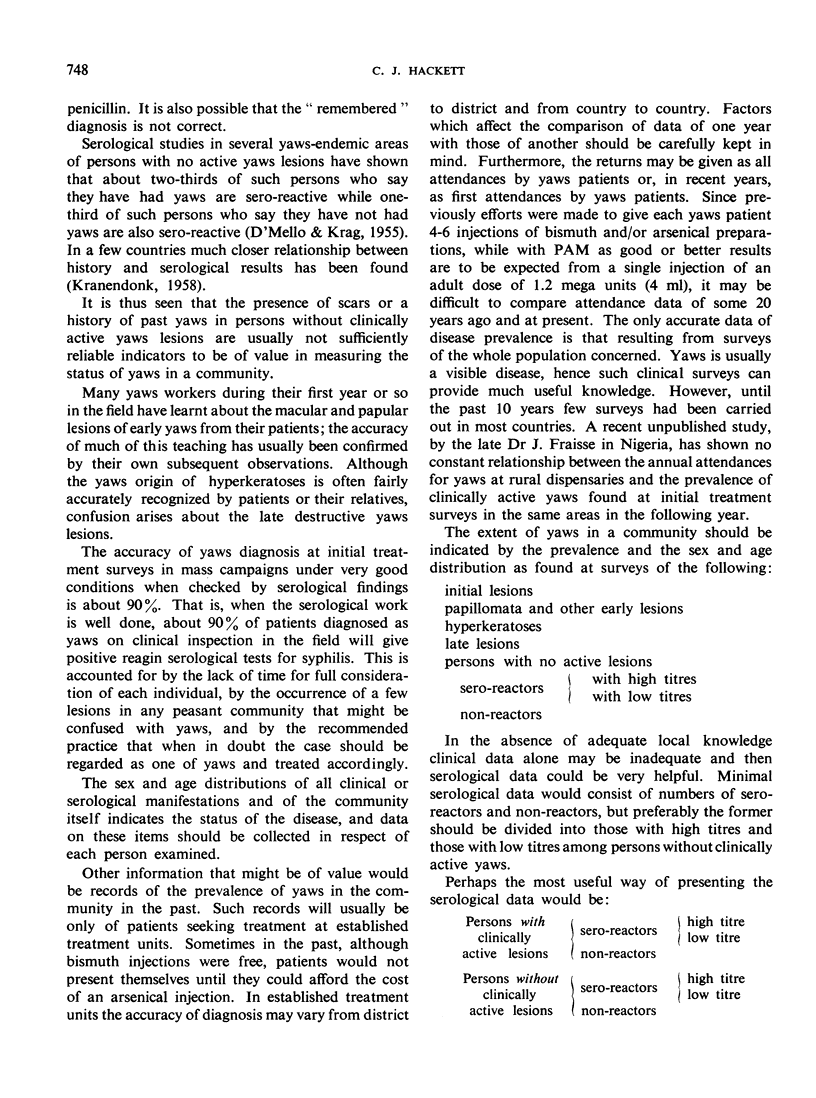
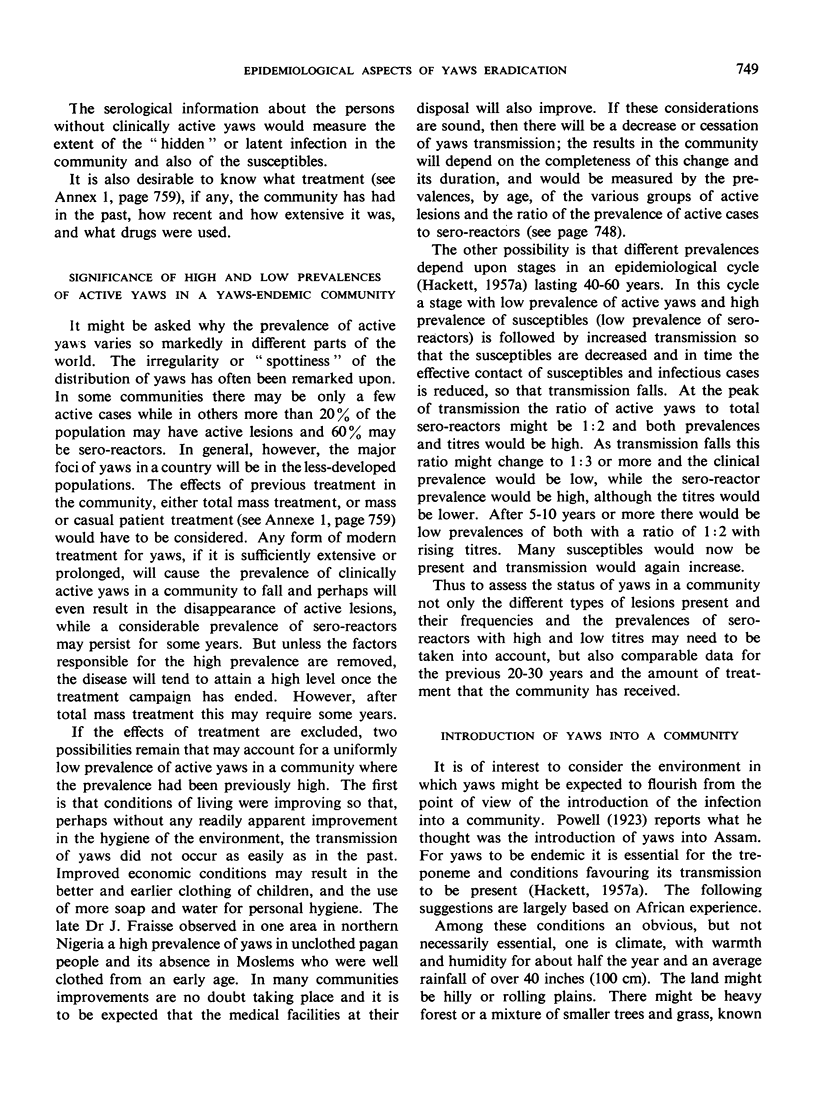
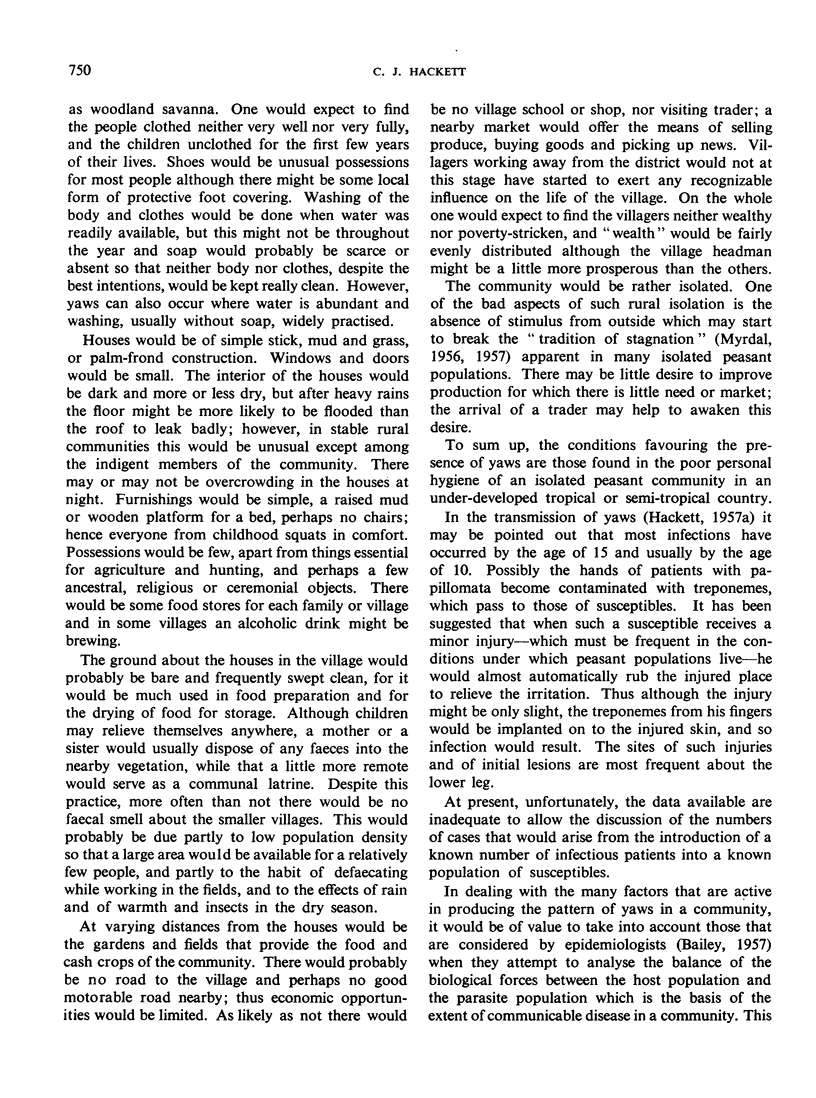
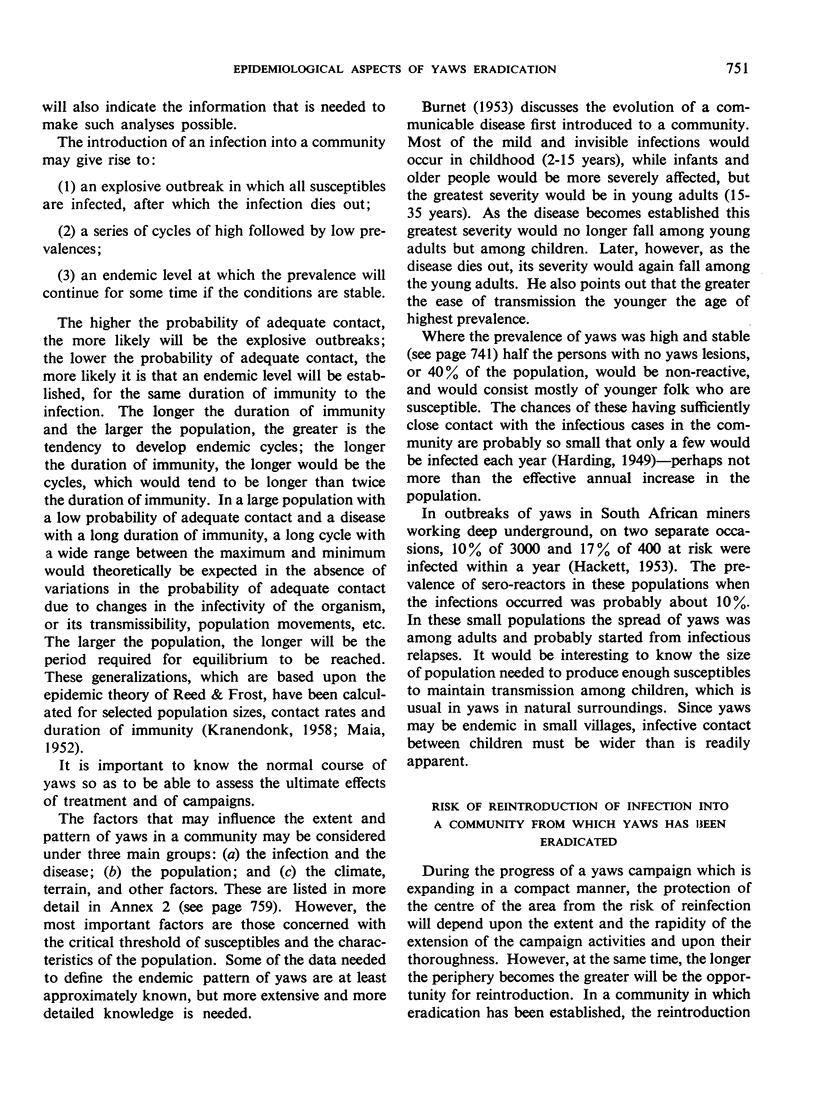
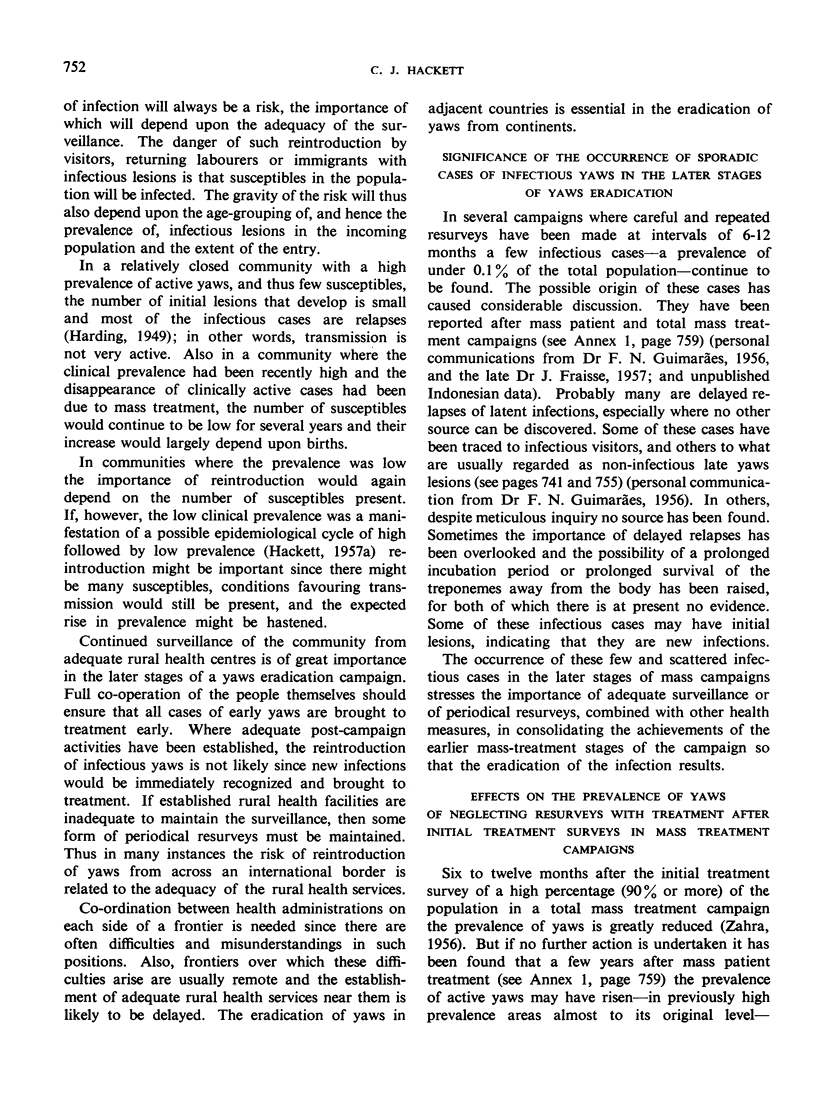
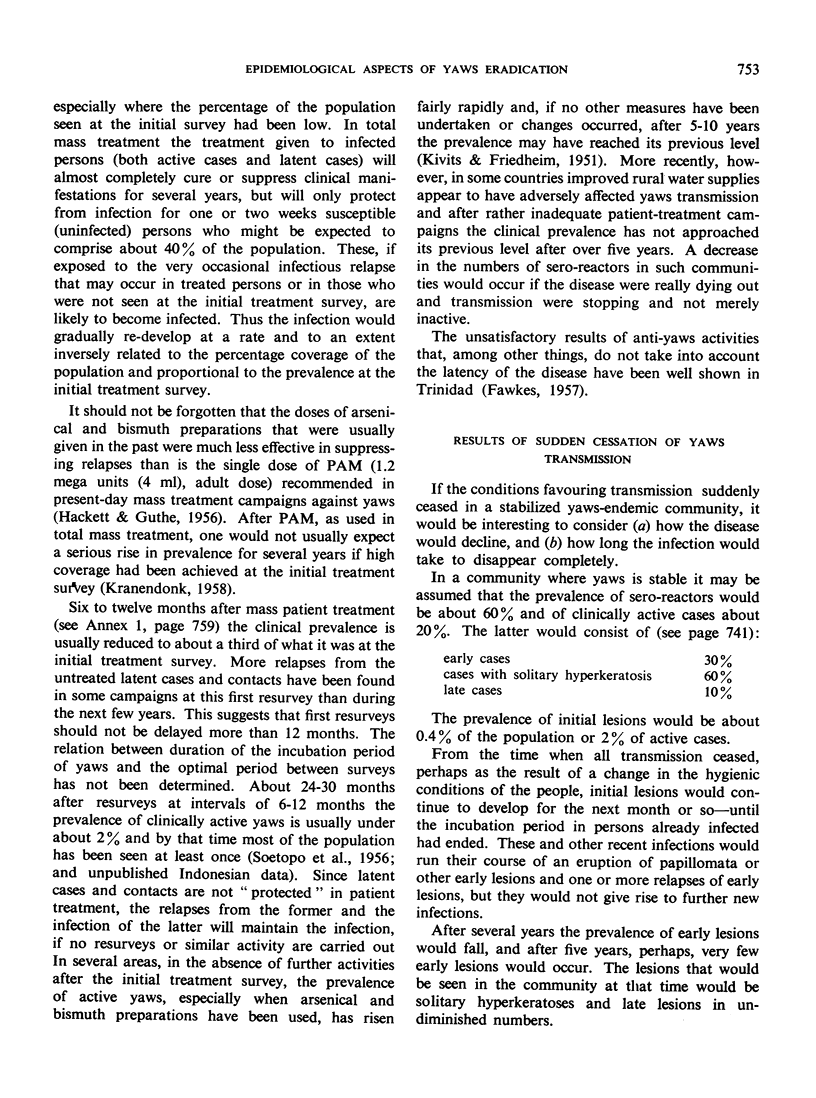
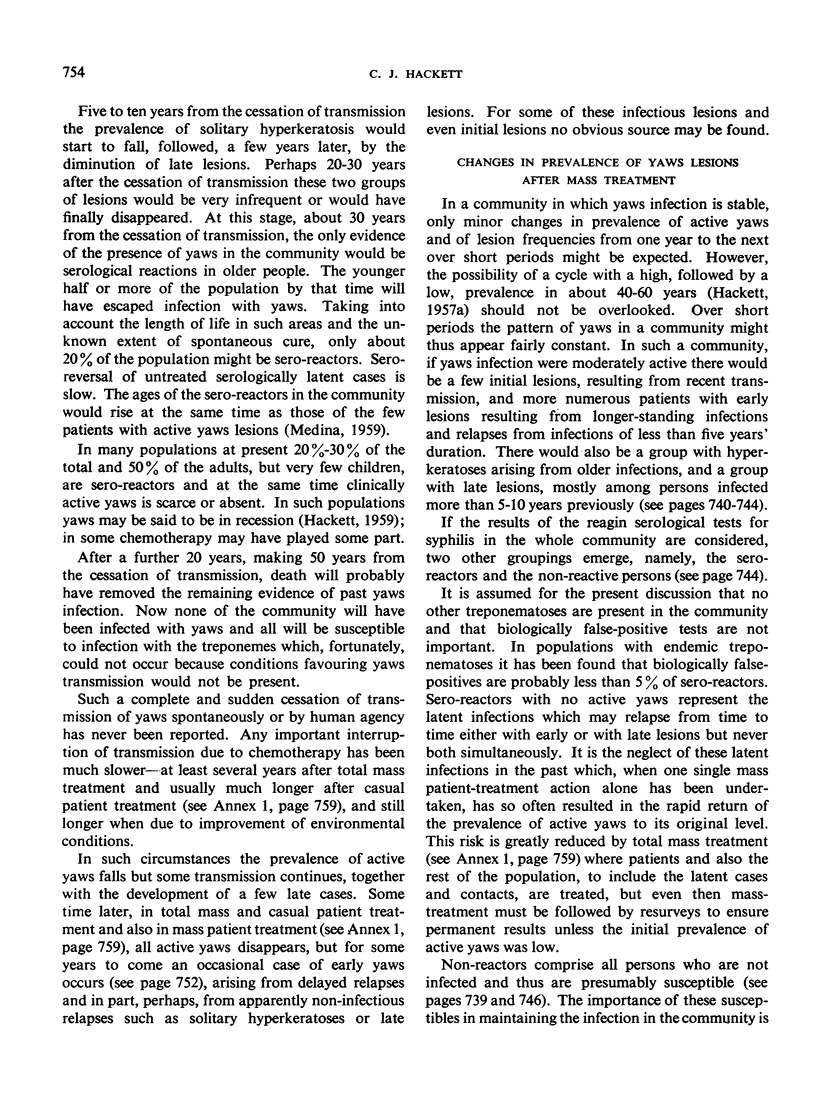
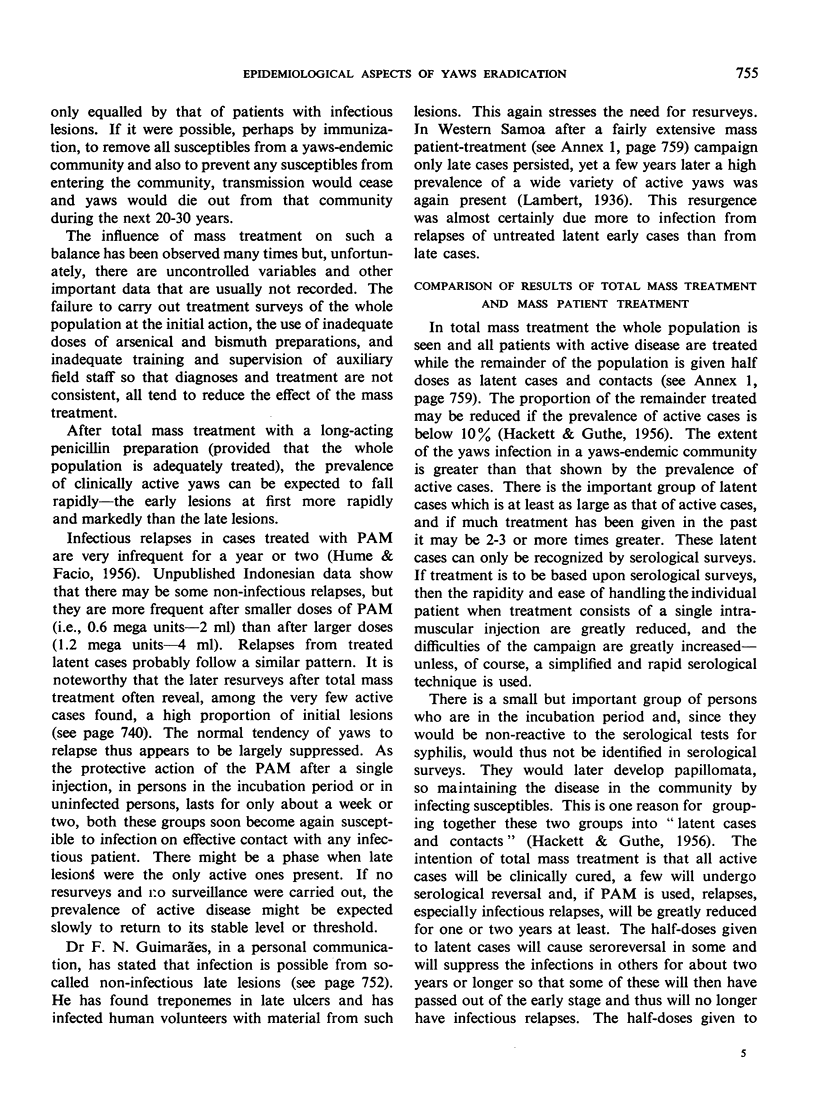
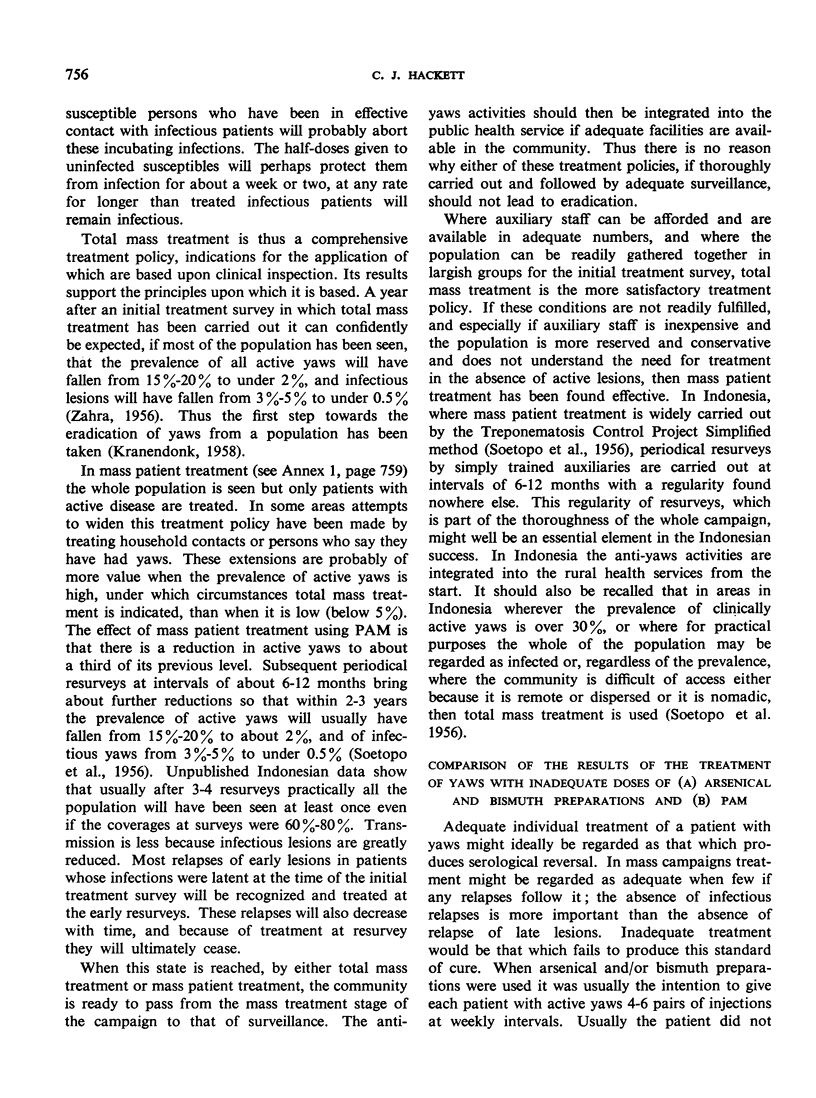
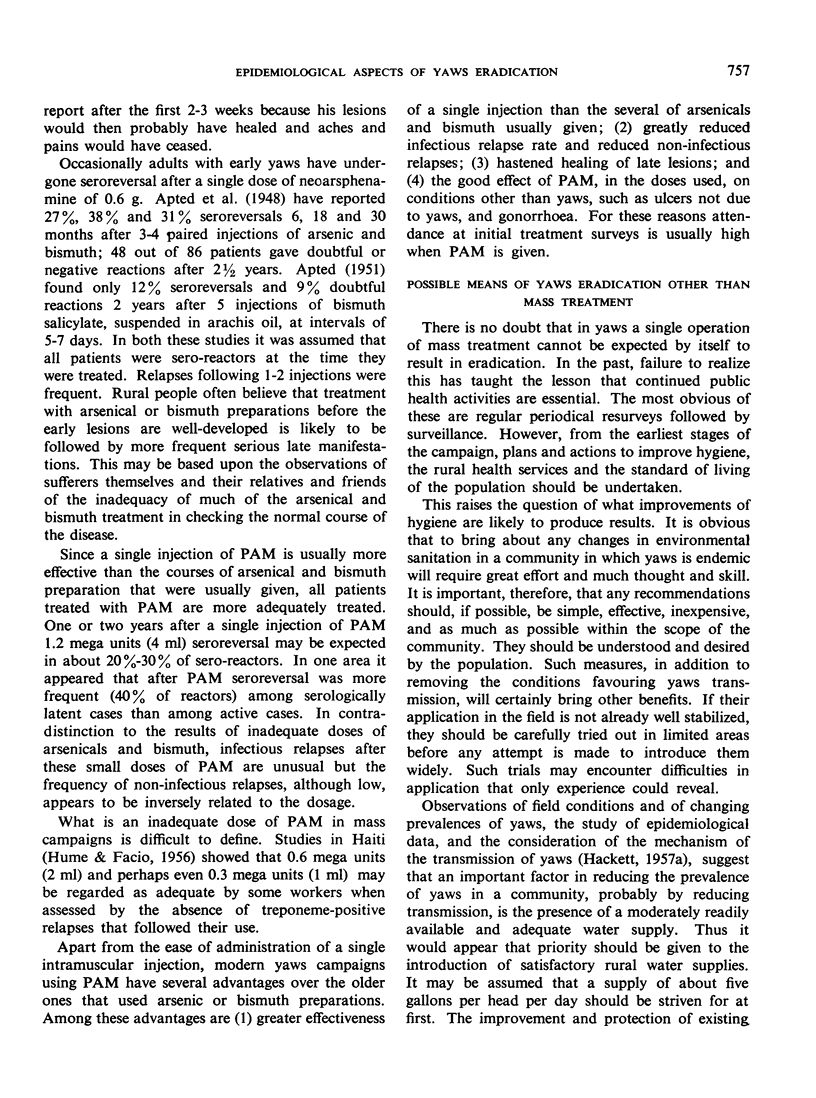
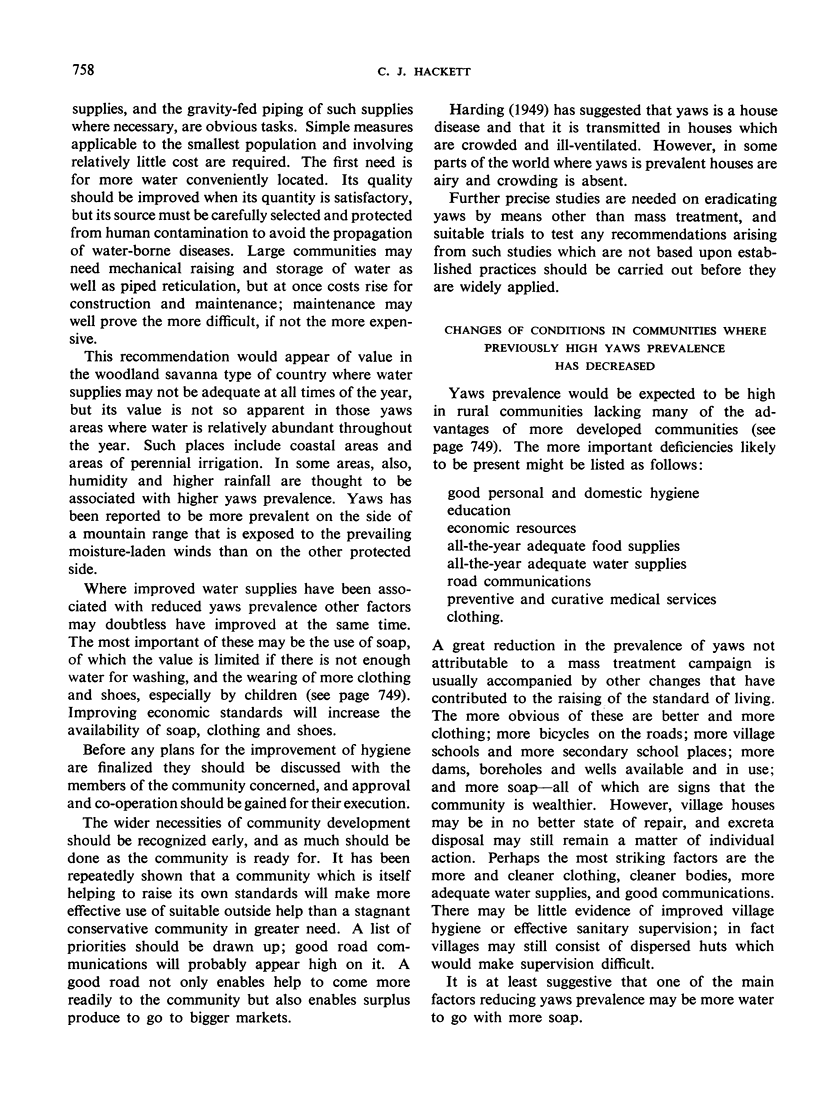
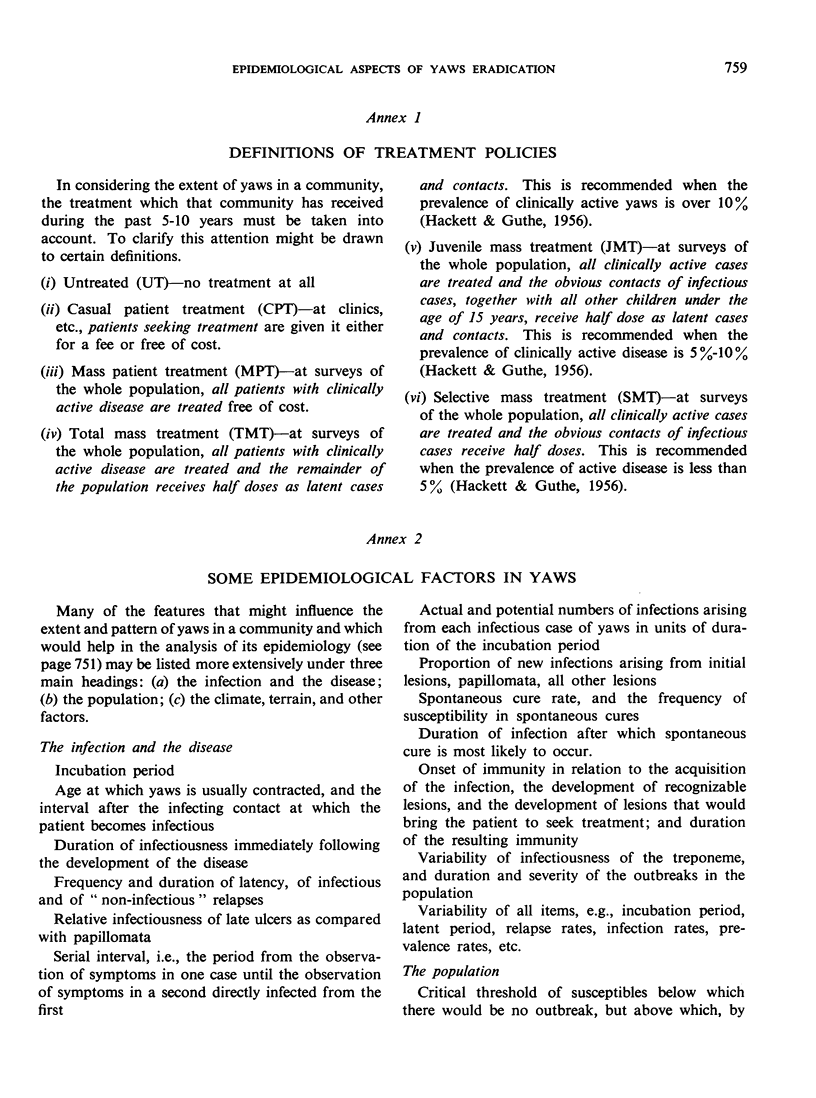
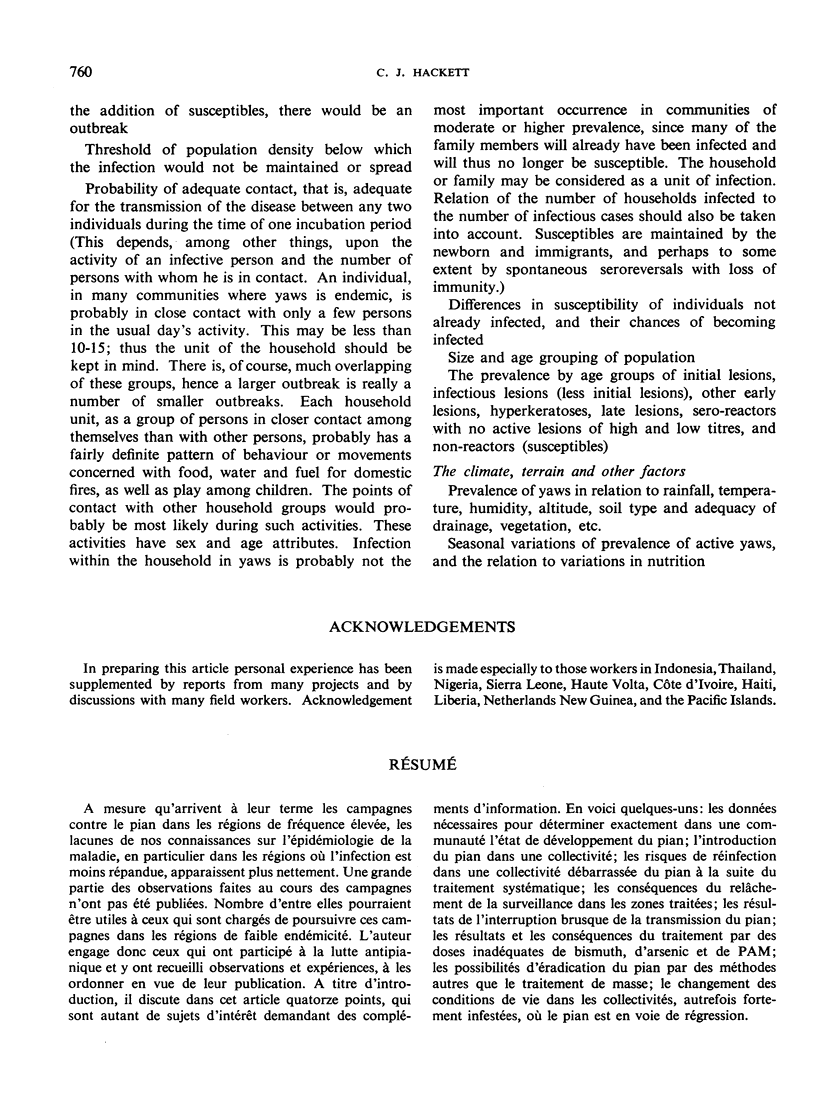
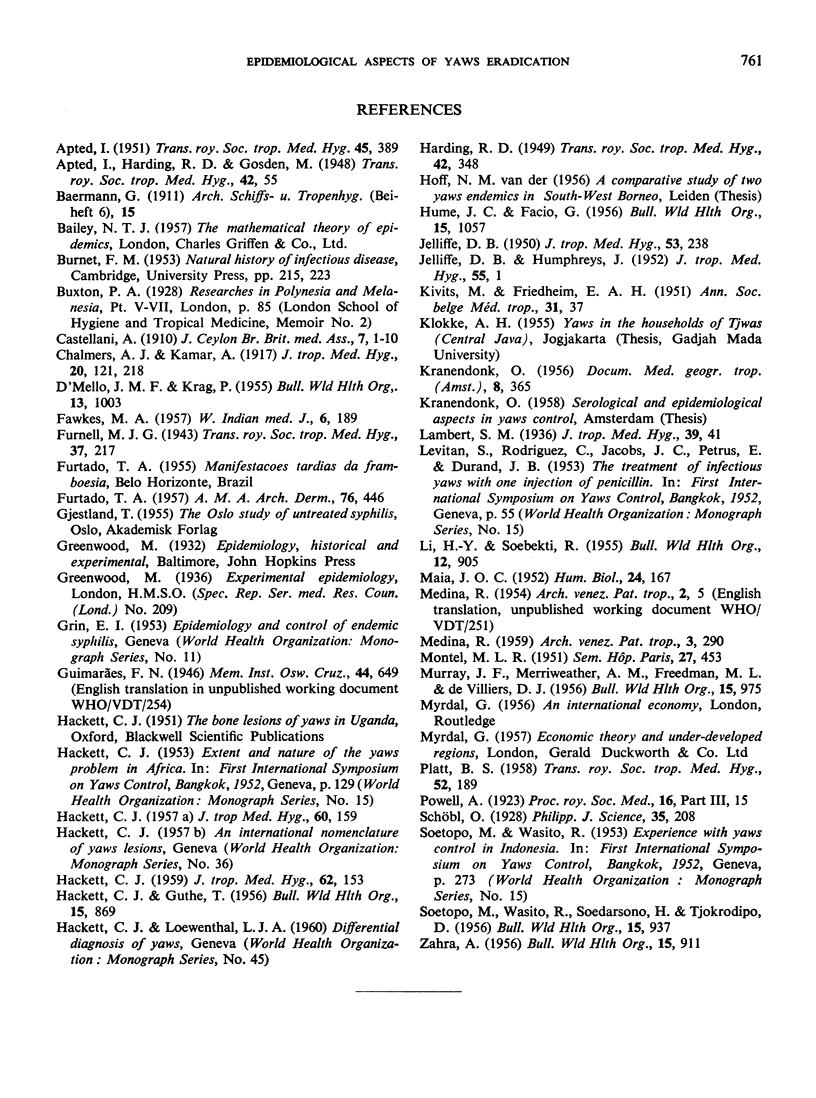
Selected References
These references are in PubMed. This may not be the complete list of references from this article.
- APTED I. Bismuth salicylate in the treatment of yaws. Trans R Soc Trop Med Hyg. 1951 Dec;45(3):389–392. doi: 10.1016/s0035-9203(51)80010-5. [DOI] [PubMed] [Google Scholar]
- D'MELLO J. M., KRAG P. Serological studies of yaws in Thailand. Bull World Health Organ. 1955;13(6):1003–1040. [PMC free article] [PubMed] [Google Scholar]
- DE MAIA J. O. C. Some mathematical developments on the epidemic theory formulated by Reed and Frost. Hum Biol. 1952 Sep;24(3):167–200. [PubMed] [Google Scholar]
- FAWKES M. A. A short history of yaws in Trinidad. West Indian Med J. 1957 Sep;6(3):189–204. [PubMed] [Google Scholar]
- FURTADO T. A. Late manifestations of yaws. AMA Arch Derm. 1957 Oct;76(4):446–451. doi: 10.1001/archderm.1957.01550220054010. [DOI] [PubMed] [Google Scholar]
- HACKETT C. J. Epidemiology of receding yaws. J Trop Med Hyg. 1959 Jul;62(7):153–157. [PubMed] [Google Scholar]
- HACKETT C. J. Extent and nature of the yaws problem in Africa. Bull World Health Organ. 1953;8(1-3):129–210. [PMC free article] [PubMed] [Google Scholar]
- HACKETT C. J., GUTHE T. Some important aspects of yaws eradication. Bull World Health Organ. 1956;15(6):869–896. [PMC free article] [PubMed] [Google Scholar]
- HACKETT C. J. The transmission of yaws in nature. J Trop Med Hyg. 1957 Jul;60(7):159–168. [PubMed] [Google Scholar]
- HUME J. C., FACIO G. An analysis of the results of the treatment of yaws with a single injection of procaine penicillin with 2% aluminium monostearate. Bull World Health Organ. 1956;15(6):1057–1085. [PMC free article] [PubMed] [Google Scholar]
- JELLIFFE D. B., HUMPHREYS J. Lesions of the feet in African soldiers; a clinical survey of 464 Nigerian troops. J Trop Med Hyg. 1952 Jan;55(1):1–5. [PubMed] [Google Scholar]
- KRANENDONK O. The value of the Chediak VDRL test in yaws serology compared with the standard VDRL-slide test. Doc Med Geogr Trop. 1956 Dec;8(4):365–374. [PubMed] [Google Scholar]
- LI H. Y., SOEBEKTI R. Serological study of yaws in Java. Bull World Health Organ. 1955;12(6):905–943. [PMC free article] [PubMed] [Google Scholar]
- MEDINA R. [Evolutive serological responses in patients with buba]. Arch Venez Med Trop Parasitol Med. 1959 Jul;3:290–297. [PubMed] [Google Scholar]
- MONTEL M. L. R. Le chancre pianique; lésion primaire d'inoculation. Sem Hop. 1951 Feb 10;27(11):453–461. [PubMed] [Google Scholar]
- MURRAY J. F., MERRIWEATHER A. M., FREEDMAN M. L. Endemic syphilis in the Bakwena Reserve of the Bechuanaland protectorate: a report on mass examination and treatment. Bull World Health Organ. 1956;15(6):975–1039. [PMC free article] [PubMed] [Google Scholar]
- PLATT B. S. Malnutrition and the pathogenesis of disease. Trans R Soc Trop Med Hyg. 1958 May;52(3):189–216. doi: 10.1016/0035-9203(58)90078-6. [DOI] [PubMed] [Google Scholar]
- SOETOPO M., WASITO R. Experience with yaws control in Indonesia; preliminary results with a simplified approach. Bull World Health Organ. 1953;8(1-3):273–295. [PMC free article] [PubMed] [Google Scholar]
- SOETOPO M., WASITO R., SOEDARSONO H., TJOKRODIPO D. The Indonesian treponematoses control project. Bull World Health Organ. 1956;15(6):937–958. [PMC free article] [PubMed] [Google Scholar]
- ZAHRA A. Yaws eradication campaign in Nsukka Division, Eastern Nigeria. Bull World Health Organ. 1956;15(6):911–935. [PMC free article] [PubMed] [Google Scholar]


